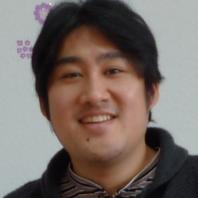![]()
![]()
Research Support Office Research Advancement Division. Tokyo University of Agriculture and Technology
| TEL | +81-42-367-5944 |
|---|---|
| FAX | +81-42-367-5946 |
This program is supported by MEXT’s scientific technology human resource development fee grant, "Program to Disseminate Tenure Tracking System".
Home > Tenured Faculties > Yoshino Daisuke

Yoshino Daisuke

| Affiliation | Institute of Engineering |
|---|---|
| Division | Division of Advanced Applied Physics |
| Research field | Mechanobiology, Design Engineering |
| Keyword(S) | Corculatory homeostasis, Cardiovascular disease, Design of medical devices, Cell biomechanics |
| Url | https://sites.google.com/go.tuat.ac.jp/dyoshino-research-group/home |
| Research experience | ・Apr. 2011–June. 2011: Staff member, Fujifilm Corporation |
|---|---|
| Educational background | ・Mar. 2006: Bachelor of Engineering, Tohoku University |
| Awards | * The latest information is shown at the member's website. |
| Selected papers and publications | * The latest information is shown at the member's website. |
Atherosclerosis has become a serious problem in the developed countries that are aging. Therefore, countermeasures to the atherosclerosis have become important. Although there are various medical treatments for the atherosclerosis, a stent placement has received much attention as a minimally invasive procedure for vascular stenotic lesion based on the coronary atherosclerosis, the arteriosclerosis obliterans, etc. A stent is a cylindrical tube-shaped medical device that can expand the stenotic lesion in a blood vessel continuously. However, the long-term placement of stents can lead to the severe problems of in-stent restenosis and stent thrombosis in blood vessels. To prevent these problems, stents coated with immunosuppresant or biomolecule now comes into general use. However, the larger force acting on the vascular wall induces vascular inflammatory reaction, and it increases the risk of long-term in-stent restenosis or stent thrombosis because of mismatch in the mechanical properties between stent and blood vessel. The hitherto existing development of a stent is trial and error, and it cannot resolve the problems of long-term in-stent restenosis or stent thrombosis.
The aim of this research is to develop the next-generation stent with high functionality through establishment of a novel design theory integrated with mechanobiology and design engineering. This research provides a cultured blood vessel model with the hemodynamic environment. This blood vessel model is useful for study about vascular pathology or drug discovery. This research also elucidates the mechanisms of in-stent restenosis and neointimal formation based on vascular mechanobiology. The results of this research can lead to an innovation in technology for cardiovascular treatment.
The tenure track system at Tokyo University of Agriculture and Technology is well developed because a young principal investigator can receive an independent reserch environment and startup grants to promote growth as a university-based researcher and educator. In addition, the faculty members well understand the tenure track system, and they support the young investigator in various ways.
In my research that focuses on basic to apploication in medical device development, I challenge to find out "something" interesting that we have never seen.